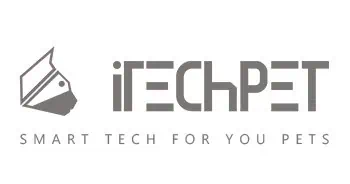
Pet technology is transforming how we care for our furry family members. In 2025, gadgets are no longer luxuries—they’re essential tools that help owners understand, protect, and nurture their pets better than ever. From AI-driven cameras to GPS collars and smart feeders, pet technology is shaping a new era of connected companionship.
This evolution isn’t about replacing human love—it’s about empowering it. Every step your dog takes, every nap your cat enjoys, and every sip of water from their bowl becomes meaningful data. These small digital insights let you anticipate needs, detect problems early, and create a lifestyle built on proactive care instead of reactive worry.
Table of Contents
The Rise of Pet Technology
Pet technology has grown from simple tracking devices into a complete ecosystem of safety, health, and happiness. Modern tools merge sensors, artificial intelligence, and smart home integration. Together, they help you manage everything from feeding schedules to behavioral training.
In today’s landscape, the most impactful innovations include:
- Health-tracking collars and smart tags that detect activity, rest, and calories.
- GPS-enabled wearables that locate lost pets in real time.
- AI cameras that recognize motion, sounds, and emotional cues.
- Smart feeders and fountains that automate daily routines.
- Vet telehealth platforms that connect you instantly with professionals.
These technologies simplify pet parenting and redefine what “responsible care” looks like in the modern home.
21 Powerful Ways Pet Technology Transforms Daily Care
Below are twenty-one practical, real-world ways pet technology is improving pet lives and owner peace of mind in 2025:
- Early Illness Detection – Smart collars monitor sleep and movement, alerting you to unusual changes that could signal health problems.
- Pain and Mobility Management – Devices track reduced activity, indicating joint pain or injury before it worsens.
- Weight Control Automation – Smart feeders calculate calories based on activity, preventing obesity or underfeeding.
- Hydration Monitoring – Water fountains measure daily intake to detect dehydration risk early.
- Behavioral Insights – AI cameras distinguish between boredom, anxiety, or play, helping you adjust routines.
- Reduced Separation Anxiety – Two-way cameras allow calm voice interaction and treat dispensing when you’re away.
- Location Tracking – GPS collars and tags provide real-time positioning if pets wander off or escape.
- Safe Home Entry – Smart pet doors recognize authorized collars, preventing stray entry.
- Sanitary Living Spaces – Self-cleaning litter boxes and odor sensors maintain cleanliness automatically.
- Better Training Feedback – Instant video and audio responses help reinforce positive behavior at precise moments.
- Data for Vet Consultations – Automatically exported activity and appetite logs make vet visits more informed.
- Allergy Tracking – Combining weather and scratching data reveals potential environmental triggers.
- Post-Surgery Monitoring – Track healing progress through gentle movement and rest patterns.
- Elderly Pet Comfort – Temperature sensors maintain optimal sleeping zones for senior pets.
- Environmental Safety – Air-quality sensors alert you when carbon dioxide or heat levels rise.
- Routine Optimization – Apps sync feeding, walks, and playtime, keeping pets on predictable schedules.
- Mental Enrichment – Smart toys challenge memory and curiosity through adaptive difficulty levels.
- Lost-Pet Recovery – Devices like the GPS Tracker for Cats Tabcat drastically reduce search time, using precision beeps and distance signals.
- Balanced Nutrition – Integrated feeders adjust serving size to your pet’s real-time energy use.
- Cleaner Homes – Automated vacuums and litter systems schedule themselves around actual shedding cycles.
- Deeper Emotional Bonds – Constant connectivity means you can interact with and understand your pet even from afar.
These innovations work best together—not as isolated gadgets but as a unified ecosystem that adapts to your routine.
Choosing the Right Tech Stack for Your Pet
When building your setup, take it slow and intentional. Start with safety before expanding to health and enrichment.
- Begin with GPS tracking and ID microchips for security.
- Add health monitoring devices like collars or feeders once you understand usage data.
- Finish with enrichment tools such as cameras and toys to improve engagement.
One of the best strategies is combining reliable tracking tools with positive-reinforcement technology. For example, pairing the Tabcat tracker with an AI camera like the Furbo Dog Camera 360° creates a complete safety and training system. While the tracker ensures location accuracy, the camera strengthens trust and communication—even when you’re not home.
What to Look For Before You Buy
Not all devices are equal, and not every innovation fits every pet. Focus on practical value instead of novelty. Before buying, check:
- Battery life (minimum 5 days continuous use)
- Comfort and weight (shouldn’t exceed 10% of your pet’s collar load)
- App usability and data export options
- Water and scratch resistance
- Responsive customer support
A good rule of thumb: if the device doesn’t make your pet’s life measurably easier or healthier within two weeks, return it.
Turning Data Into Action
Technology is powerful, but only if you act on what it tells you. Make time each week to check your pet’s dashboard. Look for consistent patterns—declining activity, skipped meals, or poor sleep—and record context like weather changes or diet adjustments. Over time, you’ll learn what “normal” looks like and notice red flags sooner.
Privacy and Ethics in the Digital Age
Pet data is personal data. Choose devices that clearly outline how information is stored, who has access, and how long it’s kept. Disable voice recording when you don’t need it, update firmware regularly, and store video locally if possible. Responsible pet technology protects privacy as much as it protects health.
Collaboration With Veterinarians
The real power of pet technology emerges when vets and owners work together. Bring your pet’s monthly data summaries to appointments—it helps professionals diagnose accurately and adjust treatment faster. Vets can even interpret trends your device records, from heart rate shifts to hydration patterns, making care proactive instead of reactive.
Routines That Keep You Consistent
Even the best tools fail if you don’t use them regularly. Stick to this simple schedule:
- Daily: Review alerts, check food and water levels, reward calm or playful behavior.
- Weekly: Sync devices, replace filters, adjust schedules based on data trends.
- Monthly: Export activity reports and share with your vet or pet sitter.
- Seasonally: Inspect collars and trackers, replace worn parts, and recalibrate GPS boundaries.
Small habits make the biggest difference—and automation ensures you never miss a beat.
Cost and Value of Pet Technology
While premium devices can be expensive, the payoff often comes in avoided vet bills and a healthier, happier pet. A quality tracker, camera, and feeder bundle costs roughly the same as one emergency clinic visit. If you’re on a budget, start small and expand over time. The beauty of modern pet tech is that it scales easily—you can begin with just one smart device and grow from there.
Expert Insight You Can Trust
Veterinary organizations are now embracing technology as part of mainstream care. According to the American Veterinary Medical Association, telehealth and remote monitoring allow vets to track progress between appointments, improving treatment outcomes and reducing emergencies. When data meets professional insight, pets receive more precise, compassionate care.
FAQ Pet Technology
What exactly is pet technology?
It’s a group of tools—like trackers, cameras, and feeders—that use sensors and smart software to help you monitor and enhance your pet’s well-being.
Is it safe for all breeds and sizes?
Yes, as long as devices are lightweight and designed for your pet’s size. Always test for comfort before long-term use.
Can it replace my vet?
Never. Technology supports your vet by providing better data; it doesn’t replace their expertise.
What’s the best device to start with?
For most owners, a GPS tracker or automatic feeder is a great first step—it delivers immediate convenience and safety.
Does AI really make a difference?
Absolutely. AI helps identify behavior patterns—like pacing or vocal tone—that signal stress or discomfort faster than manual observation.
Final Thoughts
Pet technology in 2025 isn’t about gadgets—it’s about guardianship. Every innovation, from GPS tracking to AI behavior analysis, brings you closer to your pet’s needs in real time. When used thoughtfully, these tools reduce anxiety, prevent illness, and make daily life smoother for both you and your furry friend.
Whether you’re using a precision tracker like the Tabcat or an adaptive AI system like the Furbo Dog Camera 360°, the real win is emotional connection. The future of pet care is not just smart—it’s deeply human.

